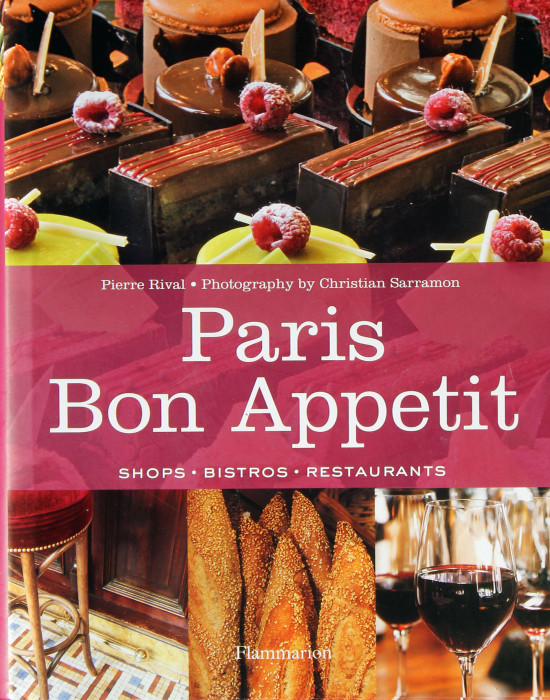Here’s are questions that cannot be answered: what is the best place to eat in Paris, where should I buy food in Paris, where should I buy wine?
It’s impossible to provide a single answer to these questions and even this book does not attempt to do that. Instead, Paris Bon Appetit divides the Parisian culinary world into three different levels based on age:
- Decadent Paris: the most historic and prestigious settings
- Traditional Paris: old-fashioned flavors and atmospheres
- Contemporary Paris: the new, the hip, the contemporary, the future
In each of these three levels, you’ll find places to eat and places to buy. And always places to adore.
In Decadent Paris, you tour establishments decades old that are the definition of high-end. Many of these are world-famous, some are more quiet Parisian treasures that the locals guard to preserve the privacy and the quality. Here the great and grand restaurants are described in loving detail: Le Cinq, Laperouse, Le Precope — in all nineteen museums of gastronomy. History and ambiance are described with studied care.
There are nineteen legendary brasseries presented, too. And the difference between a restaurant and a brasserie? In 1877 it was semi-officially stated that in a brasserie beer was sold by the measure and the food only served at tables with benches. Today, you’ll find chairs and tablecloths, too. This entire genre is based on Alsatian food, and began in the 1850 when railroads first connected Paris and Alsace. In 1871, German claimed Alsace as a war prize [Franco-Prussian War] and refugee Alsatians flocked to Paris. They rebuilt their world and Paris gained this new layer of grandness.
The Decadent section ends with the best in high-end food stores offering exceptional food products. Auge for wine, Dallayou as the ultimate delicatessen, Fauchon as the ultimate food store. If you are on a food tour of Paris, this list provides the top dozen stores that you must, must visit.
The Traditional Paris section begins with places to eat, not restaurants or brassieres, but bistros. This is, strangely, another war based concept. When Napoleon was defeated, the Russians occupied Paris. They wanted their food and they wanted it quickly. “Bistro” means fast in Russian. The food here does not take hours to prepare, it is not always sauce-heavy, but in the bistros listed here it is damn good. Pick any of these on your Paris tour, and you’ll feel absolutely native.
The shops in this section are popular with both natives and tourists. They produce food in abundance and it is as splendid as if it were crafted just for you. Boulangerie Kayser offers fantastic breads. Got to Audroet for cheese, and Le Baron Rouge for wine. There are meat and wine stores, bread palaces, chocolate, and pastries. The prices here are not in the decadent class, but, these are still world-class establishments and you’ll see euros flow from your wallet. Worth every last one.
The last section of the book, Contemporary Paris, covers the exceptional spaces and food conceived in the past two decades. The red velvet and gold leaf of royal Paris are absent in the forty restaurants described here. Modern, post-modern, austere, avant garde — these are restaurants located on movie sets. Here the experience matters as much as the food and the experience is phenomenal. The French pride themselves on quality and these spaces are ample justification. Dine at L’Arpege on minimalist cuisine in a somber room that is the perfect host for the best vegetables in the world. To sit and dine in these spaces is to be consumed by the beauty of the surroundings just as you consume the beauty of the food.
There’s a long list of food and wine stores here, too. New vendors in new spaces with new glories. Visit La Maison du Whisky to see how France can transform Kentucky. Or Le Palais des Thés to see how quality and quantity can combine with no compromise.
World cities all now vie for dominance in the food world. But Paris has always been first. Paris Bon Appetit explains why Paris stands atop the world. And surely always will.

